Beautiful pieces, check. The motivation to monetize, check. Now it’s time to start selling your art products online and get them into customers’ hands so they can admire your creativity up close.
If you’re ready to open up shop online and get paid for your passion, this step-by-step guide walks you through everything from platform options to packing inspo. We’ll also fill you in on one of the most critical business steps many entrepreneurial artists overlook.
Start the countdown ‘til your online opening night (or day!).
Decide on Your Product Types
Selling art online can mean multiple things, so you first need to choose what kind of products, i.e., the format of your art, to list.
Your options include:
- Original pieces (sell a unique piece one time)
- Digital downloads (upload once for ongoing passive income)
- Prints or print-on-demand (copies of your original pieces)
- Merchandise (mugs, tees, stickers, etc.) that features your art
The fun part? You can easily turn one piece into three or more products. Sell the original, but repurpose it as a digital download, art print, or merch item for endless sales possibilities.
Of these options, selling original artwork is the most challenging because it requires careful packaging and shipping. Investing in sturdy mailers, protective sleeves, and bubble wrap is essential.
The easiest format is digital downloads. This involves uploading your artwork (such as a scan or photograph of your piece) and selling a digital copy that customers can download and print themselves after purchase.
If you create digital artwork, this format is made for you — you can start selling your pieces online today! It’s the lowest barrier to entry since your art is ready to upload as a product in your online art store.
Many artists start with digital products when they launch their shop and then scale to include physical goods once they’re comfortable.
“A great way to get started is by offering printable downloads or teaming up with a print-on-demand service like Printify or Printful. These services allow you to put your art on all sorts of cool products — canvas prints, t-shirts, tote bags, and pretty much anything else you can think of! The best part is they integrate with platforms like Etsy and Shopify, so they handle the printing, packaging, and shipping for you. That means you can make money while you sleep, without worrying about the logistics of fulfilling orders.
For printables, platforms like Corjl and Templett are fantastic — they protect digital sellers and streamline the process, automatically sending orders once they come through. It’s a great way to earn passive income with minimal effort once your digital products are listed!”

—Jessica Angelo, Creator of Rutledge Design Co
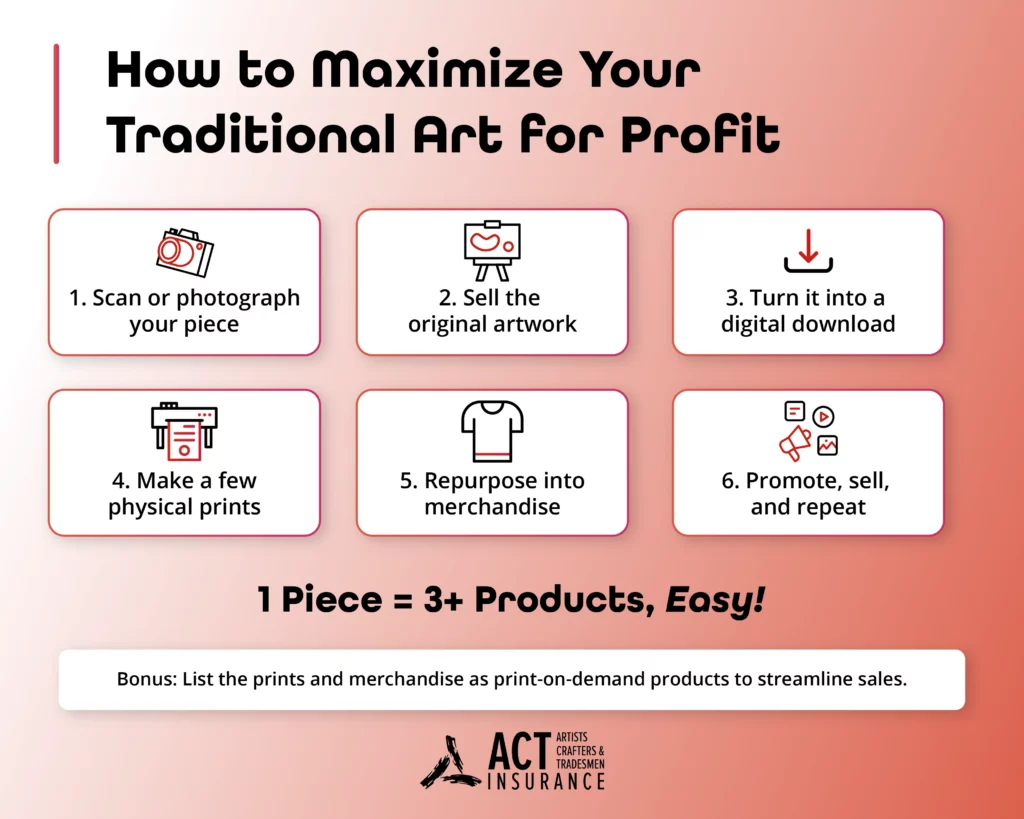
Choose Where to Sell Your Art
The next step in learning how to sell art online is finding an internet home for your pieces. The two main options are creating an account with an online marketplace or launching your own website. Both have their pros and cons!
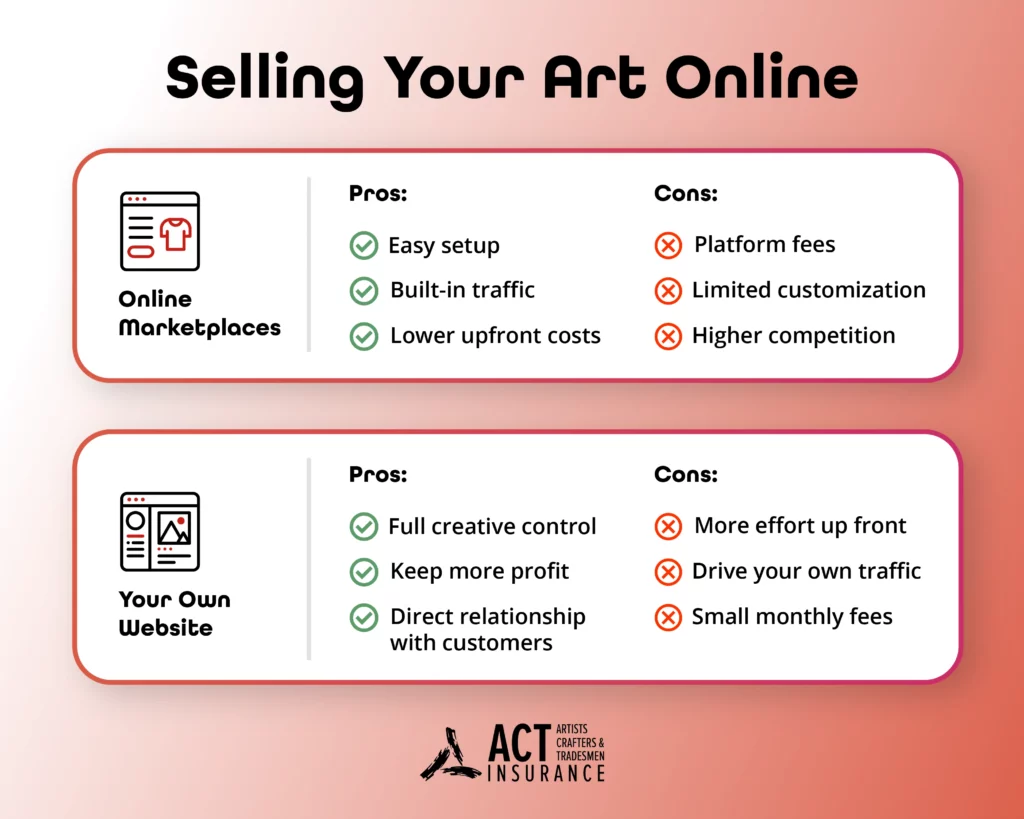
Online Marketplaces
If you opt for the marketplace route, do your research before picking a platform. These are the most popular platforms for selling art online.
- Etsy: The name “Etsy” has nearly become synonymous with unique gifts. This online marketplace with a devoted customer base is excellent for selling handmade, printable, or small original art.
- Redbubble: A print-on-demand platform with three artist tier options where you can sell your artwork on clothing, stickers, wall art prints, and more. Simply upload your design and get paid whenever your product (made to order) is purchased.
- TeePublic: Another print-on-demand platform that focuses on t-shirts, hats, and mugs — ideal for graphic or illustrative art — that discounts your design for the first 72 hours to promote more sales.
- Artfinder: This highly curated online collection is designed for selling original physical fine art directly to buyers or even creating art on commission.
- Saatchi Art: A global art gallery that supports emerging artists of all media. From sculpture to painting, it features a curator team, editorial initiatives to highlight rising stars, plus covered shipping costs (you only pay for packaging).
- eBay: A flexible platform for selling a wide range of art via auction or fixed price.
Getting started on these user-friendly platforms is simple. You typically create a seller account (or apply to be an artist), add your listings (or upload your designs for print-on-demand products), optimize for search if applicable, and then — enjoy being a paid artist!
Check out our Etsy Seller’s Guide.

Your Own Website
If you want more control over your brand, creating a business website is a smart investment. It requires more time and effort now, but sets you up for success as your online art store grows.
Here are the top platforms for making a website.
- Shopify: A powerful e-commerce platform ideal for scaling your art store with full control over sales, branding, and inventory
- Squarespace: Sleek, design-focused site builder, great for showcasing portfolios and selling art with integrated commerce tools
- Wix: Flexible drag-and-drop builder with multiple payment plans for artists starting out
- Big Cartel: Creative-focused platform with free and low-cost plans for emerging or indie artists
Creating a shop website is more intuitive than you might think. To get started:
- Choose your platform
- Pick a memorable domain name
- Design your site using templates
- Add your products (images, descriptions, and prices)
- Set up payment processing
- Connect marketing tools
- Launch and promote!

Price Your Artwork
Wondering how to sell art online and make money? Pricing is everything!
There are several key factors to consider when determining pricing:
- Cost of materials and time: How much does it actually cost to create each piece?
- Skill and experience level: The more experience you have, the more you should charge.
- Originals vs. prints: Original pieces should be priced higher than prints, which are more accessible (i.e., not as unique).
- Size or complexity: Larger or more detailed artwork can warrant a higher price.
- Market research: What are your competitors charging for similar art pieces?
- Platform fees: Don’t forget to factor in commission and processing fees.
- Shipping and packaging: Include in your pricing or clearly list it as a separate fee.
A basic pricing formula is [(hourly rate) x (hours)] + materials + overhead = base price.
Be sure to price your work fairly — you deserve to reap the benefits of all the time, effort, and creativity spent on each piece!
Pricing Example
Let’s say you painted a canvas with the following details:
- Hourly rate: $30/hour
- Hours spent: 10 hours
- Materials cost: $50 (canvas, paints, etc.)
- Overhead: $20 (utilities, studio rent, marketing costs)
(Hourly Rate × Hours) + Materials + Overhead
(30 × 10) + 50 + 20 = $370 base price

Prep Your Artwork for Sale
Just like gallery lights help physical work shine, your online art products must also be presented in the best light possible. This means taking high-definition photos of your art using flattering lighting that shows hues as true as possible.
The same goes for scans of artwork—make sure they’re clear, aligned, and accurately represent your piece.
For digital downloads, size and formatting are key. If you’re uploading for print-on-demand platforms, follow the file guidelines to ensure your products print beautifully.
You also need to develop compelling titles and descriptions for your products. A great way to connect with your customer base is to tell stories about yourself or your process to build emotional value. Was your piece inspired by a challenging event or maybe a loved one? Tell your audience all about it!
For example, DivineRooots’ description for wall art tells a personal story: “This is a representation of a Taino Woman. As I connect to my ancestral land, my goal is to create art that is a mirror of ourselves and the ancestors that fought for us to be here.”
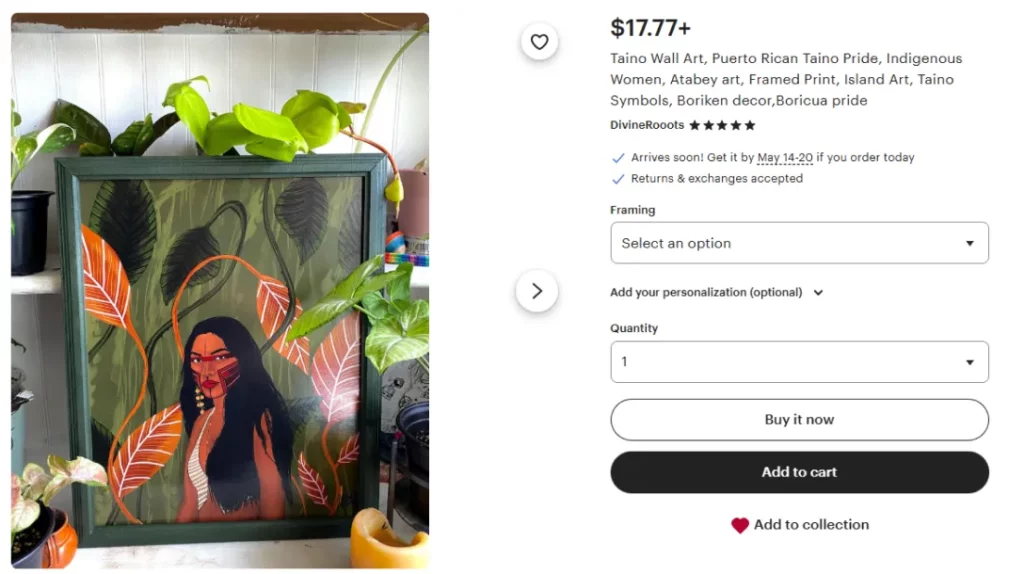
Image via DivineRooots on Etsy
“I think everyone should view their small business as a passion project when they’re first starting out. That means you can alleviate yourself from all the pressure because it’s just for fun. It’s not the thing that is going to make or break you … You can experience as much as you want with different styles of art, different styles of content that you want to make as far as selling your items.”
—Tammy Dinh, Creator of Uncomfy Co., My Biggest Advice for Starting & Running Your Art Shop
Market Your Art Online
Once your art is ready to sell online, marketing is how people actually find it. Start by building a social media presence on platforms like Instagram, TikTok, or Pinterest, where visual content (your forte!) thrives.
As you learn how to sell art online, the most important thing to remember is to be authentic and consistent throughout your marketing. Share behind-the-scenes content or your creative process from start to finish to connect with your audience and get them invested in your business.
Another simple way to get more eyes on your shop is to boost posts, which is a way to turn your existing social media posts into ads.
Beyond social media, leverage email marketing to keep customers engaged, collaborate with other artists to build a community, and learn SEO (search engine optimization) basics to optimize your listings and site so people can easily find you online.
“I’ve learned throughout these couple years you have to be consistent with updating your shop and take advantage of your social media platforms, but most importantly, just be yourself and have fun with what you create. Some of my best sellers are pieces that I didn’t overthink and just went with the flow of things.”
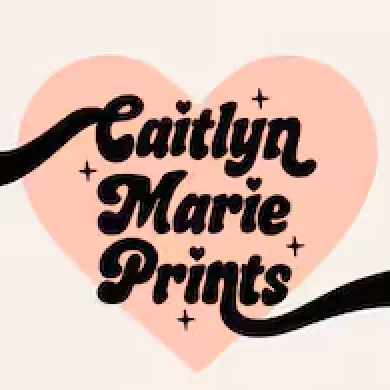
—Caitlyn Marie, Creator of CaitlynMariePrints
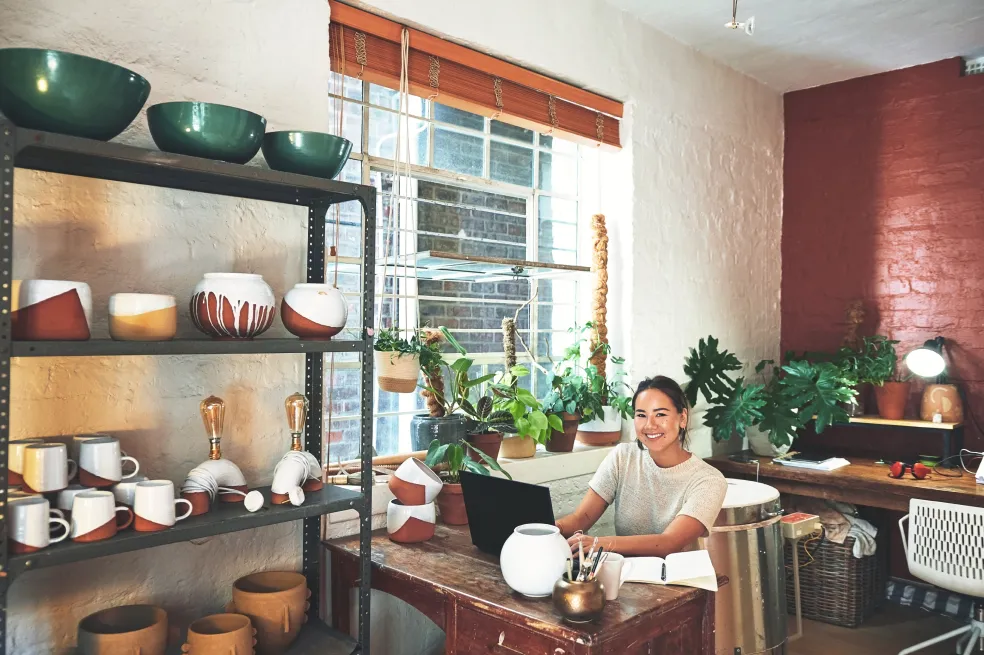
Get Legal Considerations Squared Away
Cover your legal bases by registering your business if needed — research your local rules, especially sales tax and business license requirements. If you sell commissioned or custom pieces, having a basic contract is wise to prevent potential misunderstandings.
It’s also crucial to understand copyright protections. Your original artwork is protected by copyright the moment it’s created, meaning once you paint it, sketch it, or save it as a file, it’s legally yours. Consider posting watermarked images or a copyright notice in your descriptions to discourage theft.
➡️One of the most important steps artists often overlook is getting product liability insurance, which is designed to protect your online business if your products accidentally injure a customer or cause damage to their property. Artist insurance can also safeguard you from claims related to your business if you attend in-person events, like art fairs or markets.
Pro Tip: Get peace of mind to focus on creating — not on risk — with online retailer insurance from ACT. Year-round coverage starts at just $24.25/month!
Launch Your Online Art Store
Now it’s finally time to take your online store live! Launching your business is a significant milestone. Be sure to test everything beforehand, including links, the checkout process, shipping options, and mobile responsiveness.
If you were a customer, would you be happy with the shopping experience? Ensure the answer is a resounding yes before going live.
When you’re ready, announce your launch on social media and build excitement. Take your audience along for the journey — they’ll feel like they’re part of your big moment. (Also, a launch-day promotion can’t hurt!)

Fulfill & Ship Out Orders
A smooth fulfillment process builds trust and keeps customers coming back. Package your artwork with care, communicate clearly about shipping timelines, and send tracking information promptly.
Want to wow from the first unboxing? Try these packing ideas:
- Wrap your art in branded or color-themed tissue with matching twine, washi tape, or wax seals.
- Include a handwritten note; a heartfelt thank-you that includes the buyer’s name and the pieces they ordered goes a long way in making a lasting impression.
- Add a small freebie, like a mini print, postcard, or sticker — everyone loves receiving free stuff, especially from an artist whose work they love!
- Offer care instructions on how to frame, hang, or store the piece.
- Include a discount card for their next order with a QR code that makes it easy for them to be directed to your new work or your social media accounts.
- Brand it inside and out with stickers, stamps, or custom mailers that build excitement as soon as their package lands on their doorstep.
Your artistry can extend to the experience you create for your customers when they receive your work. Make it memorable to increase your chances of getting glowing reviews and loyal patrons.
“Work on finding your voice and deciding what you want to share with the world. Be willing to learn and try new things, and don’t be afraid to make bold moves. But don’t be discouraged if your business doesn’t take off right away! Building a brand takes time.”
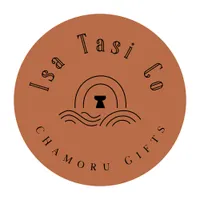
—Amanda Punzalan Holden, Creator of Isa Tasi Co
Keep Learning, Creating, & Selling
The art world is always evolving, and your journey doesn’t stop after launching your store. Continuously work on your craft and track what’s working — whether it’s a specific product or promotion — and adjust as you go.
Inspiration can be found everywhere, so keep creating and letting your art tell your story. Your online art shop is a venue for sharing your creativity with the world.
FAQs About How to Make Money Selling Art Online
What’s the Best Way to Sell My Art Online?
How Should I Price Art to Sell Online?
How Can I Promote My Art Online?
Focus on visual platforms like Instagram to showcase your work and connect with fans. Pair that with an email list, artist website, and occasional promotions to turn followers into customers.
Try posting content like:
- Artist Q-&-A sessions
- Doing a live painting session
- “Pack an order with me” video
- Telling a story about the inspiration behind a piece
- Sharing a frustration about a piece that didn’t work out


